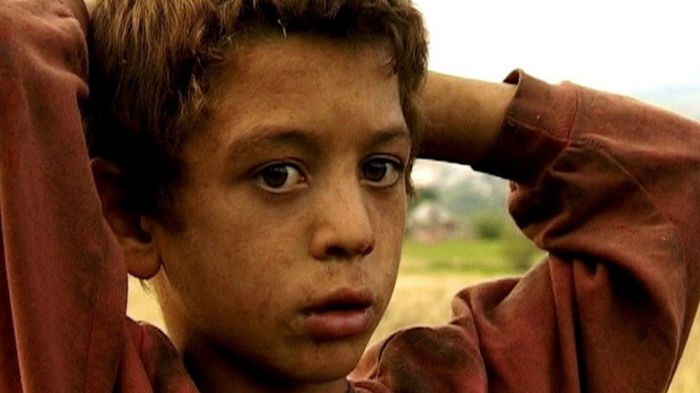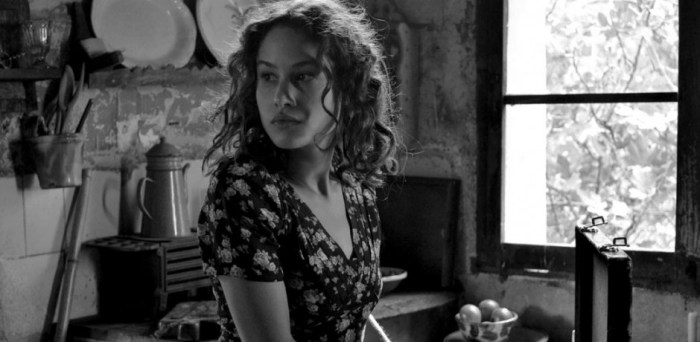As The Model and the Artist takes center stage, this opening passage beckons readers into a world crafted with expertise, ensuring a reading experience that is both absorbing and distinctly original.
Throughout art history, the relationship between models and artists has been a dynamic interplay of inspiration and collaboration, shaping the very essence of artistic expression.
Historical Context
Throughout the annals of art history, models have played a pivotal role in shaping the creative process and the resulting masterpieces that have transcended time. Their presence has been an indispensable element in the artist’s journey, serving as a source of inspiration, a vehicle for experimentation, and a bridge between the artist’s imagination and the physical world.
The relationship between models and artists has evolved over centuries, reflecting the changing social, cultural, and artistic norms of each era. In ancient Greece and Rome, models were often slaves or courtesans, their bodies used to depict idealized forms and explore anatomical accuracy.
During the Renaissance, the rise of humanism led to a greater appreciation of the individual, and models became more central to the creative process, their unique features and expressions capturing the essence of humanity.
The Model as Muse
Throughout history, models have served as muses for artists, inspiring their creativity and providing a tangible connection to the emotions and experiences they wished to convey. The beauty, grace, and sensuality of models have captivated artists, leading to the creation of iconic works that have become synonymous with their subjects.
From Botticelli’s Venus to Leonardo da Vinci’s Mona Lisa, models have been immortalized in art, their images forever etched in the collective consciousness.
The Model And The Artist is a compelling exploration of the complexities of human relationships. While the story revolves around the relationship between a model and an artist, it also delves into the broader themes of love, loss, and self-discovery.
As the story progresses, the reader is drawn into the characters’ lives and experiences the challenges they face. The Model And The Artist is a thought-provoking and emotionally resonant work that will stay with the reader long after they finish reading it.
If you’re looking for a story that will challenge your assumptions and make you think, then I highly recommend If You Block Someone On Snapchat Will The Saved Pictures Go Away . This thought-provoking piece explores the intricacies of relationships, delving into the complexities of love, loss, and self-discovery.
The Model And The Artist is a poignant reminder of the enduring power of human connection.
The Model as Collaborator
In contemporary art, the role of the model has expanded beyond that of a passive subject. Models are now often seen as collaborators, actively participating in the creative process and contributing their own ideas and interpretations. This collaborative approach has led to a new level of authenticity and intimacy in art, as models and artists work together to create works that reflect their shared experiences and perspectives.
The Role of the Model
Models play crucial roles in the artistic process, serving as inspiration, references, and collaborators. Their physical presence, expressions, and gestures provide artists with valuable insights and materials to create compelling artworks.
Inspiration and Influence
Throughout art history, models have been sources of inspiration for artists. Their unique features, body language, and personalities have captivated the imagination of painters, sculptors, and photographers. For example, the Mona Lisa’s enigmatic smile and Leonardo da Vinci’s meticulous depiction of her facial expressions have made her an iconic figure in art.
References and Studies, The Model And The Artist
Models also serve as essential references for artists, allowing them to study human anatomy, proportions, and movement. By observing models in different poses and lighting conditions, artists can accurately capture the human form in their artworks. Michelangelo’s detailed anatomical studies of the human body, evident in his sculptures like David, demonstrate the importance of models in artistic representation.
Collaboration and Interpretation
In contemporary art, models often participate as collaborators in the artistic process. They bring their own interpretations and experiences to the artwork, influencing the artist’s perspective and the final outcome. Performance artists, such as Marina Abramović, have used models as co-creators in interactive and immersive installations that explore the boundaries of art and human interaction.
The Artist’s Perspective

Artists have a unique perspective on the use of models. They rely on models to bring their artistic vision to life, and the relationship between artist and model can be a complex and rewarding one.
Challenges of Working with Models
There are a number of challenges that artists face when working with models. One challenge is finding the right model. The model must have the physical attributes that the artist is looking for, but they must also be able to convey the emotion and personality that the artist wants to capture.
The Model And The Artist, a thought-provoking piece, explores the complexities of human nature. It prompts us to ponder the sheer number of individuals being brought into the world every second. According to How Many People Are Born Every Second , an astounding 4.2 people are born in that fleeting moment.
This staggering statistic serves as a sobering reminder of the profound interconnectedness of humanity and the constant evolution of our collective existence. The Model And The Artist continues to resonate, inviting us to contemplate the boundless potential and endless possibilities inherent in each new life.
Another challenge is working with the model to create a pose that is both natural and flattering. The artist must be able to guide the model without being too controlling, and the model must be able to trust the artist’s vision.
Rewards of Working with Models
Despite the challenges, there are also many rewards to working with models. One reward is the opportunity to learn from the model. Artists can learn about the human body and how it moves by observing models. They can also learn about different cultures and perspectives by working with models from different backgrounds.
Another reward is the satisfaction of creating a work of art that is both beautiful and meaningful. When an artist is able to successfully capture the essence of their model, it is a truly rewarding experience.
Artistic Techniques
Depicting models in art involves a wide range of techniques, each with its own strengths and characteristics. Artists employ these techniques to capture the human form in various ways, exploring different perspectives, emotions, and expressions.
One fundamental approach is drawing, which utilizes pencils, charcoal, or other dry media to create lines and contours. Drawing allows artists to define shapes, capture movement, and convey subtle details.
Painting
Painting offers a diverse array of techniques for representing models. Oil paints, acrylics, and watercolors each have unique properties that influence the texture, color, and luminosity of the artwork. Artists may use brushes, palette knives, or other tools to apply paint, creating effects ranging from realism to abstraction.
Sculpture
Sculpture involves shaping three-dimensional forms from materials such as clay, stone, or metal. Sculptors use various techniques, including carving, molding, and casting, to create lifelike representations or abstract interpretations of the human body.
Photography
Photography captures a single moment in time, preserving the model’s pose, expression, and surroundings. Photographers utilize lighting, composition, and post-processing techniques to enhance the impact of their images.
Representation and Identity
Models play a pivotal role in representing diverse identities and cultures within the art world. Their physical attributes, expressions, and backgrounds contribute to the creation of images that reflect the multifaceted nature of human existence.
The representation of models in art raises ethical considerations, particularly regarding the exploitation of marginalized or underrepresented groups. Artists have a responsibility to approach the representation of models with sensitivity and respect, ensuring that their depictions are authentic, empowering, and inclusive.
Impact on Identity Formation
Models serve as visual representations of different cultures and identities, which can influence how people perceive themselves and others. Positive and diverse representation can promote self-esteem, acceptance, and a sense of belonging within marginalized communities.
Ethical Considerations
- Consent: Models should provide informed consent before being depicted in artwork.
- Objectification: Artists must avoid objectifying or dehumanizing models.
- Stereotyping: Representations should challenge stereotypes and promote inclusive narratives.
- Cultural Sensitivity: Artists should research and understand the cultural backgrounds of models to avoid misappropriation or harm.
Contemporary Perspectives

The contemporary art world has witnessed significant shifts in the relationship between models and artists. Technological advancements and the rise of social media have had a profound impact on the way models are perceived, represented, and utilized in art.
Technology and the Democratization of Modeling
- Digital photography and image editing software have made it easier for artists to access and manipulate images of models.
- Online platforms and social media have created new avenues for models to showcase their work and connect with potential collaborators.
Social Media and the Rise of the “Influencer”
- Social media platforms have given models the power to build their own brands and control their public image.
- This has led to the emergence of “influencers” who have a large following and can leverage their popularity to promote products and services, including their own artwork.
Case Studies: The Model And The Artist

Case studies offer valuable insights into the influence of models on artists’ styles and creative processes. By examining specific examples, we can gain a deeper understanding of the dynamics between artists and their muses.
One notable case is that of French painter Pierre-Auguste Renoir, whose work was heavily influenced by his use of models. Renoir sought models who embodied his ideal of feminine beauty, and he often portrayed them in intimate and relaxed poses.
The influence of his models is evident in his soft, sensual brushstrokes and his ability to capture the ephemeral qualities of light and movement.
The Role of Models in Frida Kahlo’s Art
Frida Kahlo, a Mexican artist known for her self-portraits and depictions of her physical and emotional pain, also relied heavily on models. Kahlo’s models were often friends or family members, and she used them to explore themes of identity, sexuality, and suffering.
Through her portraits, Kahlo sought to convey the complexities of her own experiences and to challenge societal norms.
Last Recap
From historical contexts to contemporary perspectives, The Model and the Artist unveils the intricate tapestry of this enduring relationship, highlighting the challenges, rewards, and ethical considerations that have shaped the art world for centuries.
FAQ Summary
What role do models play in the artistic process?
Models serve as living references, inspiring artists with their poses, expressions, and physical attributes, and enabling the exploration of human form and emotion.
How have models influenced artists throughout history?
Models have been instrumental in shaping artistic styles and movements, from classical realism to modern abstraction, providing artists with a tangible connection to the human form.
What ethical considerations surround the representation of models in art?
Artists must navigate issues of consent, privacy, and the responsible representation of diverse identities and cultures when depicting models in their work.